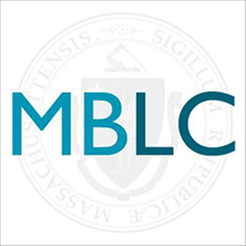By Lyndsay Forbes, Project Manager and Grant Specialist at the MBLC
We all know one way to get people to your programs is having food. So, why not offer food programming? At this year’s Urban Libraries Conference, Christopher Morgan and Patty Sussmann from the Newburgh Free Library in Newburgh New York gave a great presentation called “Cooking Classes without a Kitchen”. Here are some key points from it that might have you adding food programming at your library.
Why do food programming in the first place? It’s important to point out that there are a lot of great reasons to offer this besides getting people in the door. Cooking and eating are educational! Reading, math, and science are at the heart of cooking. The typical hands-on nature of this type of offering can appeal to a broad range of learners. Depending on the topic, programs can improve community health—how to make heart healthy recipes for instance. Finally, don’t overlook the social aspect and community building it can do. Food brings people together, something libraries strive to do.
If you’re on board with trying food programming, you might be wondering where to start. Hiring outside presenters is one way to go. There are a lot of possibilities in terms of finding the right ones for your library. A local cookbook author is an obvious choice if you have any. Local caterers or chefs can be a great option as well. Schools and universities might have culinary programs you can tap into for potential presenters or maybe there’s a nearby cooking school. Adult education centers often have cooking instructors. Specialty food or cooking stores could have some skilled staffers who want to share their passion. One often overlooked option is a nutritionist or dietician—you can usually find them at hospitals or grocery stores.
Equipment and facility space are a common concern with offering food programming. You do not need a full-scale kitchen to do this! If you hire outside presenters, they will often bring their own set up. But what if staff wants to do the programming? What should you have? Check out “Kitchen in a box” in the Culinary Literacy Toolkit. Here you’ll find a list of basic kitchen tools for those needing a more flexible set up. This toolkit was developed by the Free Library of Philadelphia and is a must-read for public libraries who are thinking of offering food programming.
Speaking of equipment, programming based on cooking tools is another option you can explore. Think blender, spiralizer, or instant pot! You’re sure to have cookbooks on whatever the latest gadget trend is. Build a program around the tool, demo a recipe, and have relevant cookbooks on display for check out. Maybe even add that equipment to your library of things to let people try it at home.
Still nervous about actually cooking in the library? There are lots of options that don’t involve cooking at all! Try a food tasting for cheese or chocolate. Presenters will often incorporate some history or other background information in the program. Coffee and tea tastings will involve some equipment but present a similar appeal. Beer and other alcoholic beverages are likely off the table, but how about having a mocktails class? Another non-cooking option could focus on cooking-related skills. For instance, proper knife use and care is valuable for any cook to know. Food safety is a topic that can be covered in its own class or you could incorporate it into other food programs.
Finally, libraries have been offering book clubs for years so it’s no surprise that cookbook clubs have joined their ranks. There are a couple of different ways you can run a cookbook club: pick a cookbook, an ingredient, or a theme. Once you’ve decided that, participants make a dish and bring it to the meeting to share. It’s a great way to meet people and try new food recipes that you might not get to on your own.
Hopefully, you’re inspired to include food programming at your library. With so many options out there, there’s sure to be something that works for you. Bon appétit!

